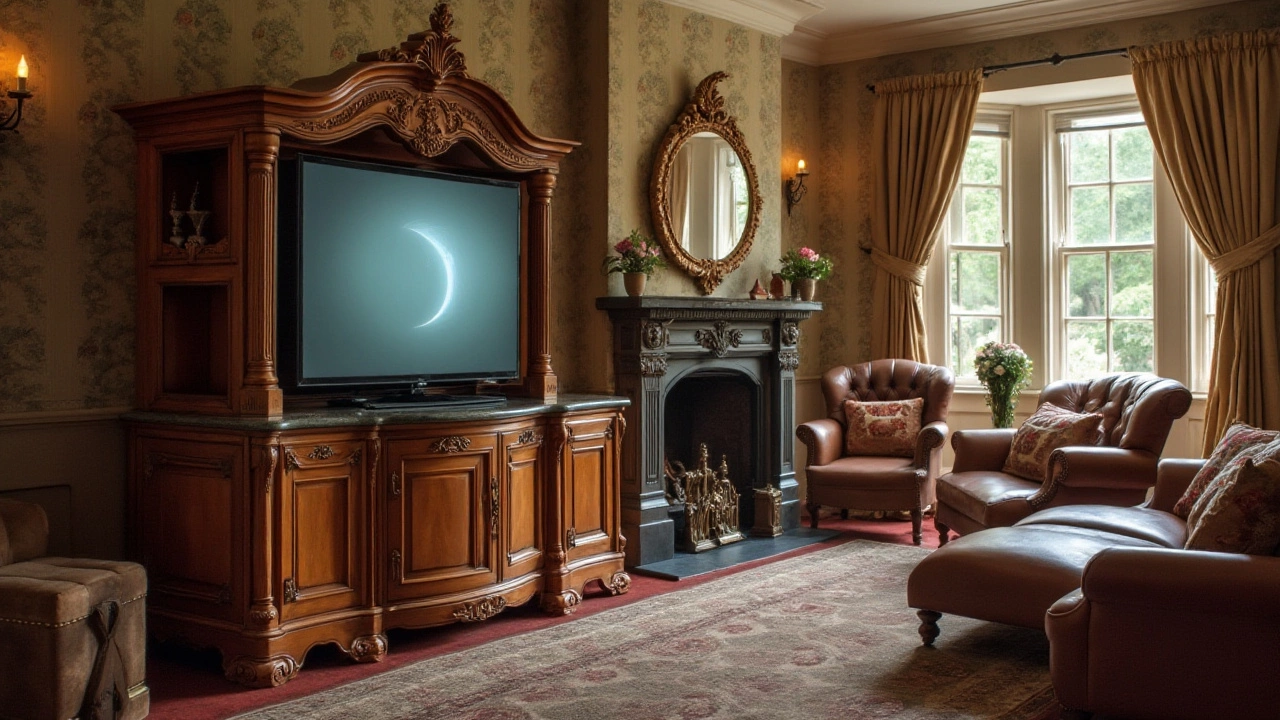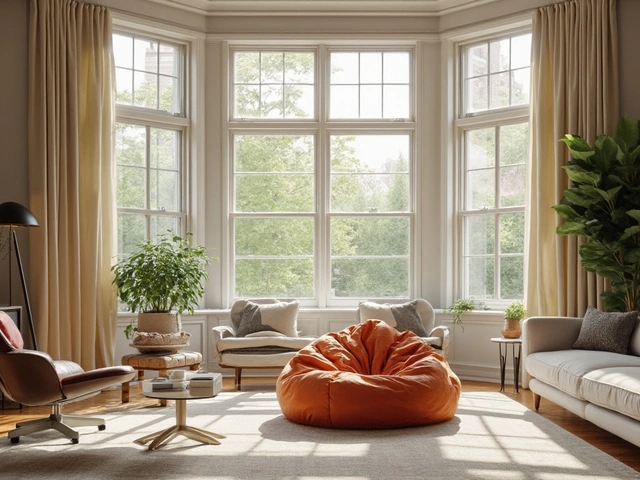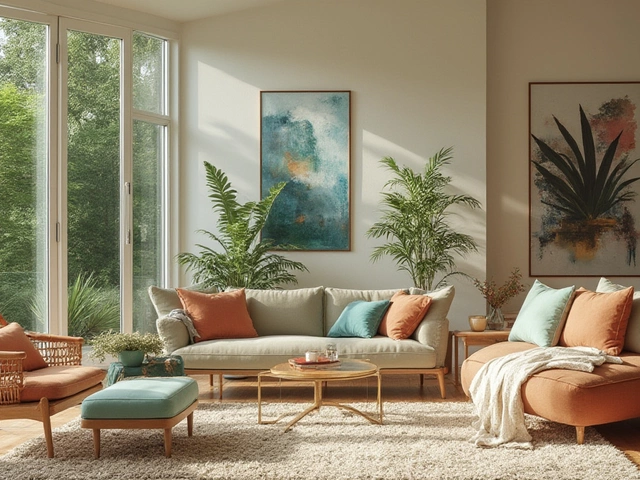Finding the right TV stand is more than just a purchase; it's about creating an inviting space where family and friends can gather. It becomes a centerpiece of your living area, reflecting both style and functionality. Yet, many find themselves puzzled when navigating the variety of choices available.
Before you start hunting for a TV stand, it's crucial to understand your living room's layout. Measure your room and the wall space dedicated to your television setup. This basic step ensures your choice won't overpower or underwhelm the intended area.
Next, think about the overall style of your living space. Whether you're drawn to rustic charm or modern chic, your TV stand should harmonize with the rest of your furniture. Consider how elements like color, shape, and material will complement or contrast your existing pieces.
Understanding Your Space
When it comes to choosing the perfect TV stand, one of the most important factors is understanding your living space. This step is not just about figuring out where the TV stand will physically fit. It's about envisioning how this piece of furniture will interact with the rest of the room to create a cohesive and pleasing atmosphere. Start by examining the dimensions of your room. Take measurements of the wall where the TV will be mounted or placed. Knowing these details helps prevent buying a stand that's either too large and overwhelming or too small and insignificant on the wall.
Once you've got your measurements, consider the room's layout. If your living space is cozy and compact, a corner TV stand might be ideal, as it can make efficient use of often underutilized space. For more expansive living rooms, a larger stand centered as the home entertainment focal point can draw guests in. Think about the traffic flow around the area. If you're frequently navigating around your entertainment area, ensure there's ample space to move without bumping into corners.
It's equally crucial to think about what else needs to fit in the room. Are there other essential pieces of furniture? Will this TV stand need to accommodate more than just the TV, perhaps a gaming console or stereo system? Storage considerations are also vital; some stands offer shelves and cabinets for DVDs, remotes, and other accessories. According to recent home design trends catalog, incorporating multi-functional furniture in limited space environments has risen by 20% in the last two years. This data highlights the increasing need for carefully planned furniture arrangements in modern homes.
"The most successful interiors are the ones where balance and scale play a huge role", says designer Nate Berkus, emphasizing the importance of understanding the room's dynamics before selecting furniture.Consider the height of your stand as well, ensuring it's comfortable for viewing. The last thing you want is a crick in your neck from watching TV that's perched too high or too low. Ideally, the center of your TV screen should be at eye level when seated. All these factors contribute to a pleasant viewing experience, ensuring that your entertainment area is both functional and enjoyable.

Finding the Right Style
Embarking on the quest to find the right style for your TV stand can be an exciting journey through the myriad of design possibilities that cater to diverse tastes and home decor themes. As more homes become canvases of self-expression, this seemingly straightforward choice becomes an opportunity to infuse personal flair into your living space. A well-chosen TV stand not only supports your television but significantly enhances the room's aesthetic vibe, contributing to your home's overall personality.
The first step in determining the right style is to examine your existing home decor. If your home boasts a mid-century modern feel, characterized by sleek lines and minimal adornments, a TV stand echoing these elements might be your perfect match. Alternatively, for those whose tastes veer towards rustic or farmhouse aesthetics, a stand crafted from reclaimed wood with a distressed finish could speak to your sensibilities. It's important to let these established styles guide your decision, ensuring the stand feels like a natural extension of the room, rather than an afterthought.
Incorporating a mix of contemporary and traditional elements has also become quite popular, where eclectic style enthusiasts blend old with new for a unique and personalized touch. Consider a modern stand with minimalist features, accented by vintage decor items like a classic table clock or brass-framed photos. This not only enriches the visual interest but also creates a sense of harmony and character against the sleek surfaces of modern pieces. As noted in "Interior Design Today,"
"The harmony between functionality and design is increasingly pivotal in modern furniture choices."
Another aspect to consider is the color and finish of the TV stand. If your room is adorned in neutral tones, a pop of color through the TV stand can add vibrancy and draw the eye, serving as an accent piece. Conversely, if you already have bold colors present, opting for a more subdued stand can balance the space. For fans of industrial styles, stands featuring metal frames or concrete tops are making a statement in lofts and urban apartments, aligning well with the utilitarian and bare basics nature of industrial decor.
Don't overlook the role of symmetry and asymmetry in design. While a symmetrical arrangement featuring balanced and uniform elements tends to exude elegance and refinement, an asymmetrical setup can inject a playful, dynamic energy into the room. Consider the placement of supporting elements such as speakers, books, or potted plants around the TV stand, and how their arrangement can influence the overall look. A balanced positioning can create visual order, while creative asymmetry may transform your stand into an artful statement in its own right.
Finally, given that a TV stand can often serve multiple functions beyond holding your TV, integrating storage solutions intelligently into the design is key. Open shelving allows for decorative display options, while closed cabinets can keep the clutter of cables and remotes at bay. Some stands offer modular options, which appeal to those who love rearranging their space or planning for future decor overhauls. Capitalize on these options to leverage both style and utility, ensuring your chosen stand is as practical as it is eye-catching. Remember, the right style is not just about aesthetics; it's about how every choice contributes to the functionality and charm of your living area, making it a true reflection of you.

Considering Storage Needs
When choosing the right TV stand for your home, storage often becomes a key factor in decision-making. These stands are not only about holding your television; they serve as pivotal pieces of furniture that organize and streamline your living space. If you're finding your remote, gaming controllers, or DVD collections often scattered around the room, a thoughtfully chosen TV stand can be your solution.
Think about the various devices you usually connect to your television. From game consoles to streaming devices and Blu-ray players, each of these gadgets requires a dedicated spot. Certain TV stands come with adjustable shelves and dedicated slots for these peripherals. This ensures that your consoles and devices sit comfortably, with sufficient ventilation to prevent overheating. In addition, look for models that offer nifty cable management solutions to keep all those pesky wires neatly tucked away.
Incorporating Style with Functionality
The art of selecting a TV stand often involves blending storage efficiency with aesthetic appeal. Many people find stands with closed cabinets more visually appealing, as they can hide clutter more effectively. These cabinets might include elegant doors or drawers that dynamically slide open, revealing treasures like beloved DVDs or even old record collections. Choose a style that suits your household. Do you prefer glass doors to appreciate what's inside, or solid wooden doors for a sleeker look?
A Consideration of Space
The amount of storage you need also directly relates to the size and style of the stand. In smaller rooms, consider models that maximize vertical space. Tall and narrow stands can be surprisingly accommodating without taking up too much floor space. Conversely, if your room is spacious, a wider stand might provide a balanced and cohesive look, especially for bigger screens. You might be surprised to know that, according to a home furnishings survey, 70% of people prefer wider stands because they offer a more stable and proportional appearance relative to their TVs.
"The best TV stands are those that disappear completely into the room yet functionally organize everything you need to enjoy your screen time," once remarked a renowned interior designer.
For those passionate about the latest tech, consider stands with smart features. Some modern designs include built-in charging stations or hidden compartments to house home assistants and speakers. Ultimately, the choice of storage needs is as unique as your entertainment setup itself. Taking a moment to assess what you need from your TV stand will ensure you find one that truly enhances your living space.

Material and Durability
When picking the ideal TV stand, material and durability hold the key to ensuring longevity as well as aesthetic appeal. The choice of material directly impacts how sturdy and enduring your stand will be in the long run. One common material is wood, prized for its timeless beauty and robustness. Whether opting for oak, walnut, or mahogany, wood can suit many decor styles from rustic to classic, bringing warmth into your living room. One must remember, however, that genuine solid wood comes at a premium and necessitates regular maintenance to keep it looking its best. It is important to polish and protect wood surfaces to prevent scratches and water damage.
If you lean towards a modern look, metal might catch your fancy. Known for its sleek and industrial charm, metal furniture often amalgamates clean lines with minimalism. Also, metal often provides an unparalleled strength and can support heavier TVs without breaking a sweat. Nonetheless, it's important to ensure that the metal is powder-coated to prevent rust, especially if you reside in regions with high humidity. Glass TV stands offer a sophisticated shine and complement contemporary aesthetics, though they are more prone to scratches and fingerprints. Careful handling and regular cleaning are essential to maintain their pristine appeal. "Choosing a TV stand with a glass component can brighten your space, but be mindful of its upkeep," suggests interior design expert Rachel Ashwell.
Then there's engineered wood or MDF (Medium-Density Fiberboard) making its mark for affordability and versatility. Often finished with a veneer, MDF mimics the appearance of real wood at a fraction of the cost. It's lightweight, allowing easy movement, but beware of its weaker resistance to moisture. Sealing or laminating the surface could provide added protection. It’s interesting to note, according to a report by the Furniture Industry Research Association, around 65% of contemporary TV stands incorporate some form of composite materials to balance cost and functionality. And it’s not just about the primary materials. Check the hardware — are the joints sturdy, are the drawers easy to slide? Quality craftsmanship should never be overlooked.
So, when choosing a TV stand, consider the makeup that will best endure children’s rambunctious playtimes or impromptu movie nights. A quality piece promises to stand by your side through evolving electronic setups and decor trends. Perhaps, just as Shakespeare famously asserted, presenting itself as a mirror reflecting your home’s unique tapestry.





